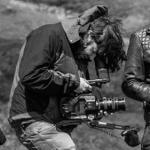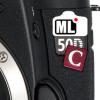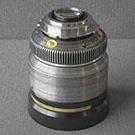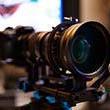Leaderboard
Popular Content
Showing content with the highest reputation since 07/10/2012 in all areas
-

Van Diemen Cine-Iscorama Conversion - Review.
Zmu2 and 12 others reacted to Tito Ferradans for a topic
A lot has been questioned about this subject since it first showed up in >a> couple pictures uploaded to Redstan's flickr, or (four days later) in Andrew's first post about them, in late July, 2011. Almost three years have passed and still we don't have enough objective reviews and facts about this mod. I'm gonna try to achieve this goal here. I'm starting with a bit of history (which involves some guessing), but feel free to skip it. :) At first, it seemed that Alan (Redstan) was the one responsible for the whole thing, but now I believe he was the one who presented the the job to Van Diemen, and made a whole bunch of them at a huge cost and time. I don't think he sold any of these from the first batch, since we never heard of anyone reselling them, or using anything like that, but I might be wrong (Tony, feel free to chime in and correct me if this is wrong information). Then, time passed and a year and a half later comes Andrew Wonder, who was also featured on another EOSHD post involving a tuned iscorama, he called his "Wonderscope" and explained how he linked the pictures to Christopher Smith's machining job at Van Diemen. I come to believe it was only after this "indirect" advertising and lots of emails and questions from anamorphic shooters over the world that Van Diemen realised this "thing" could be a regular service they were the only ones able to provide. Partly thanks to Tony's many inputs on the original design and partly thanks to the sudden interest in the subject. If I'm not mistaken, early 2013 was the moment when other shooters from this forum started sending their lenses over, and we had all the fuss regarding HUGE delays in delivery and processing orders. People had their lenses trapped there for over six months, etc. Just search the forum for "Van Diemen" and some of these will be listed, followed by multiple users asking various questions about the mod. Mainly "is it worthy?", which is a VERY subjective question. I've sent my pre-36 Iscorama lens from Brazil in early December, 2013, after extensive emails with Christopher, at Van Diemen. My main concern was the time it would take to complete the job. He assured me I would have the lens back in 90 days. Recently, other forum members have reported they're >speeding the process to only a week, which is amazing (of course, this doesn't take into account the time spent during shipping). The mod is listed on Van Diemen's website, and costs £850.00 + shipping (and another £95.00 if you want special engraving). That rounds to about US$1500, which, we all should agree, is a big amount of cash. It's important to remember that not all Iscoramas are eligible for the conversion as well. Tony has pointed out that the inner workings of the anamorphot are kept intact, so if you have defective glass or bad internal mechanisms, these will be passed onto the mod. Christopher confirmed this by informing that all lenses are verified once arriving at VD's, and every single defect is reported back to the owner, as you're asked if you want to proceed with the conversion (mine has some faint markings on the rear glass). Now, what does the mod do, EXACTLY? The original Iscorama 36 weighs about 400g, has a fully plastic housing (which is pretty fragile) and focuses down to 2m without diopters (or >closer, through a hardcore mod). Rear thread is 49mm and you need some spacers to avoid hitting its rear glass onto the taking lens' front glass. Goes as wide as 50mm on a full-frame sensor and has a simple button feature for alignment. Focus throw is long (around 8mm), and if you modded yours for close focus, you need special attention so you don't drop the front element to the ground. The VD conversion weighs 680g (220g lighter than an Iscorama 54, and still much smaller than the 54 beast), because the housing is solid metal. Also, it has standard 0.8 pitch focus gears. At some point during assembly, Christopher sends you an email, confirming if focus engravings should be in feet or meters, and it focuses down to 1.1m (or 3' 7") without diopters (it's twists a little over 360 degrees, and that impresses me every time I do it), even though the closest focus engraving is 1.2m (the 1.1m mark would overlap with the infinity mark). Focus throw is 1cm long, beating the close focus mod and making your life really hard if you want a follow focus that is able to spin from infinity focus down to 1.1m. Rear threads are 58mm, and it does increase vignetting a little. It shows very slight vignetting on a Helios 44 (58mm) if stopped down, on a full-frame sensor. Aligning is still very simple, much like 1.33x lenses, where you have a rotating part with a small screw that locks the lens into position. Mine had the alignment buttons in really bad shape, so this new housing made aligning really simple, and I don't have to worry about breaking the lens apart in the process. They're also kind enough to include front and rear lens caps for safer transport. I also read - after my conversion was done - that Van Diemen redesigned the rear (clamp-like) part of the housing to avoid this extra vignetting. I couldn't find the link pointing to where I read that. If someone knows what I'm talking about, please comment below and I'll update the post! Also, if you want to improve it even more, you can follow >jaquet's tips and stuck it into a lens support so you don't even need to align it ever again. There's a recurring comparison between VD and a 54, and they are, indeed, different lenses. First of all, VD isn't necessarily multicoated, like all 54's, it's still a "medium" lens (not as small as the original 36 nor as big as the 54), but it doesn't draw so much attention, so you still have the stealth factor. Front thread is 72mm, which is a blessing for finding and using diopters, quite the opposite of the 95mm filter threads on the Isco 54. Please consider that I've owned (and used) an Isco 54 for over a year, so these aspects aren't guesses at all. The full metal body is very nice too, since many Iscoramas have had rough times since they left Isco's factory, 30-40 years ago. Mine had its filter thread broken to smaller chunks of plastic and was held together by an empty UV ring. This, added to the almost-stuck alignment mechanism, and close-focus mod made sure that I could not EVER rent the lens as it was. Damn, it's a $4000 lens, it would be nice to make some money out of it, right? VD's conversion lets you rest assured that your Iscorama will work like any regular professional lens should work: without any special information required (specially regarding quirks). Also, some other useful information not entirely related to the conversion: You should check in your country's customs office if there's a special form or procedure for items that are being sent out for servicing abroad and will return later. This will avoid paying extra taxes over the conversion costs. I know Brazil offers this option, and it's particularly useful, since I would pay a 60% tax over the declared value + shipping cost if it wasn't through this method. Plus Christopher is a really nice guy, who replies all messages and addresses every question you might have about the service. A good seller makes a hell of a difference for me.13 points -
Eagerly awaiting your Pocket Cinema Camera? You already have a micro for thirds camera and some C-mount lenses? Want to know if they will cover the sensor of the Pocket? Lets find out! I hope you will add your results, so we can make this list growing. I will only add lenses to the lists when you have proof, in other words: images. How? Because we know the active sensor area of the BMPCC measures 12,48 x 7,02 mm, it is fairly easy to check if our C-mount lenses will cover the full sensor. Calculate this by taking a picture with a lens on your micro four thirds camera, and crop out the image area of theBMPCC. In Photoshop: Open the image. Go to Edit > Image Size, uncheck resample image. Change Image width to 19 centimeters, press ok Go to Image > Canvas Size, change dimensions to 12,48 x 7,02cm, press OK to crop the image to BMPCC size. Resize to 1920x1080 pixels Post your results! Note: If you shoot on the GH3 or other MFT camera's, the sensor size is 17 x 13mm, so change the width in step 3 to 17 cm! To lazy to do it yourself or you can't work it out? Upload the full resolution files and I'll do it. List terms explained: Yes = covers the full sensor of the Blackmagic Pocket Cinema Camera No = doesn't cover the sensor Needs modification = Doesn't fit on C-mount to M43-adapter without modifications Equivalent = The focal length and depth equivalent on a fullframe camera (5D Mark III for example) Blackmagic Pocket Cinema Camera Compatibility list Primes Apollo 25mm f/0.85 - Yes = 72mm f/2.4 equivalent [link to proof] Angenieux 10mm f/1.8 Retrofocus (Fixed Focus) - Yes (dark corners) = 28,8mm f/5.2 equivalent [link to proof] [more info] Carl Zeiss Jena Tevidon 10mm f/2 - Yes - Needs modification = 28,8mm f/5.8 equivalent [link to proof] [more info] Carl Zeiss Jena Tevidon 35mm f/1.9 - Yes - Needs modification = 101mm f/5.6 equivalent [link to proof] Century 9mm f/1.8 - YES (poor quality) [link to proof] Computar 8mm f/1.3 - NO [link to proof] Computar 16mm f/1.4 - NO [link to proof] Computar TV Lens 25mm f/1.8 - YES = 72mm f/5,2 equivalent [link to proof] Cosmicar 8,5mm f/1.5 - NO [link to proof] Cosmicar 12.5mm f/1.8 - YES - Needs modification = 36mm f/5.2 equivalent [link to proof] Cosmicar 25mm f/1.8 - YES - 72mm f/5.2 equivalent [link to proof] Ernitec 6.5mm f/1.8 - YES (heavy distortion) [link to proof] Ernitec/Navitar 17mm f/0.95 - YES (v. blurry corners & distortion) [link to proof] Fujinon TV 12.5mm f/1.4 - Yes (blurry corners) - Mod.? (unknown) = 36mm f/4 equivalent [link to proof] Fujinon TV 16mm f/1.4 - NO [link to proof] Fujinon TV 35mm f/1.7 - YES - Needs modification = 101mm f/4.9 equivalent [link to proof] Leitz Macro Cinegon 10mm f/1.8 - Yes (dark corners) = 28,8mm f/5.2 equivalent [link to proof] Kern Switar 10mm f/1.6 - Yes (slight vignette & blurry corners) [link to proof] Nikon Cine Nikkor 13mm f/1.8 - Yes = 37,5mm f/5.2 [link to proof] Nikon Cine Nikkor 25mm f/1.8 - Yes = 72mm f/5.2 equivalent [link to proof] Pentax 25mm f/1.4 - YES - 72mm f/4 equivalent [link to proof] Schneider 10mm f/1.8 (silver version) - No (almost) [link to proof] Schneider-Kreuznach Cinegon 11.5mm f/1.9 - No (almost) = 33mm f/5.6 equivalent [link to proof] Schneider-Kreuznach Cine-Xenon 16mm f/2 - Yes = 46mm f/5.8 equivalent [link to proof] [link to proof (2)] Schneider-Kreuznach Xenon 25mm f/0.95 - Yes = 72mm f/2.7 equivalent [link to proof] Schneider Xenoplan 17mm f/1.7 - Yes (blurry corners) - [link to proof] SLR Magic 11mm F1.4 - Yes - [link to proof] (added by EOSHD) Tokina TV Lens 8mm f/1.3 - NO [link to proof] Tokina TV Lens 16mm f/1.6 - NO [link to proof] Taylor-Hobson Cooke Kinic 25mm f/1.3 - Yes = 72mm f/3.7 equivalent [link to proof] Taylor-Hobson 25mm f/1.9 - Yes - 72mm f/5.6 equivalent [link to proof] Wesley 25mm f/1.4 - YES = 72mm f/4 equivalent [link to proof] Wollensak Cine Raptar 12.5mm f/1.5 - Yes = 36mm f/4.3 equivalent [link to proof] Wollensak Cine Raptar 25mm f/1.9 - Yes = 72mm f/5.6 equivalent [link to proof] $ 25 noname 25mm f/1.2 CCTV - YES = 72mm f/3.5 equivalent [link to proof] Zooms Ernitec 6-12mm f/1.4 - NO [link to proof] Kowa TV Zoom 12.5-75mm f/1.8 - NO [link to proof]12 points
-

Music video shot on BMCC/Speedbooser/Isco54
Adam Camporeale and 10 others reacted to Mihnea Popescu for a topic
Hi guys, We just shot this video with the BMCC, Metabones Speedbooster, Nikon Lenses and Iscorama 54MC. RAW files were developped in After Effects CS6 (with Camera Raw) to Prores444 2400/1350. Color grading was done in AE. Please let us know what you think, we'd love to get some feedback. Cheers, Mihnea11 points -
lesson learned.... not one person dealing with this issue seems to have contributed positively at all to this forum. Just come here to take take take. either selling or buying, they bring NOTHING to the forum. Personally I think there should be a stop to all this posting of ebay listings, personal sales, etc. at least topics of this nature should be only postable and visible by regulars. Also, someone please close the ebay listings topic. this has to be the most ridiculous idea ever. Share your findings with the world, kill any chance of you or anyone else savvy to anamorphics getting a bargain because everyone and their grandma can come in and see a run down of anamorphics worth bidding on. If it were a secret topic to regulars I'd understand, but literally, I'd say that topic alone is contributing 50% towards the current silly inflation of anything with a squeeze ratio!11 points
-

Canon 7D Mark II video specs vs the enthusiast DSLR competition (GH4, A7S, 5D3)
Damon Mosier and 9 others reacted to Brian Williams for a topic
This is the best new camera of 2010!10 points -

EOSHD Moderating Team!
Musty and 9 others reacted to Andrew Reid for a topic
I am upgrading some members to moderator status. If they choose to exercise their newfound abilities, this upgrade comes with the ability to delete and lock posts as well as the all powerful, all conquering ability to ban members who misbehave! Thanks for their positive contributions to life here at EOSHD I am promoting RichG101, mtheory and jonpais to moderator status for the main forum and all sub-sections. It carries no extra work or obligations - exercising their privileges will be entirely at the discretion of the moderator. I'll continue as the main admin. But I think having extra eyes and ears plus a few more trusted people with the ability to clean up posts and ban members will help me a lot. Also since they expressed an interest, JohnBarlow will moderate the Anamorphic forum and Andy Lee will get his own sticky thread on lenses and lighting which may build into it's own forum section if it is successful. I'll create the moderator privileges later in the week. Any objections or any opt outs please have your say on this thread!10 points -
Mac app to resample GH4 8 bit 4:2:0 to 10 bit 4:4:4
benymypony and 8 others reacted to Thomas Worth for a topic
Hey guys, I've written a really simple command line app for Mac that will resample GH4 footage from 4K 4:2:0 to 2K 4:4:4 using pixel summing. This will give you real 10 bit data in the luminance channel, so it's not just doing a brute-force bump from 8 bits to 10 bits. There actually is some interesting pixel finagling going on here: http://www.mediafire.com/download/f7h950spj5hrn9f/gh444.dmg There's no GUI, so you'll need to run it from the terminal. Do this by copying the app into the directory that contains the GH4 MOV files and using the following command in a terminal: ./gh444 INPUTFILE.MOV Make sure you cd to the current directory first if necessary. You can do this by typing "cd" into the terminal, add a space, and then drag the folder containing the MOV files into the terminal window. It will automatically add the path to the cd command. It'll look like this: cd /path/to/gh4/files The app will spit numbered DPX frames out in a folder named "dpx_out." I'd love for you guys to give it a try and see if you find it useful!9 points -
I've been playing with the GH4 for a while now. I'll share my video's here. Shot a lot more material, still have to edit/upload it. Will do so in the following days. Go over to Vimeo/YouTube for all the details in the lenses/profiles/settings used. You can download 4K files or high bitrate on Vimeo. Cinema 4K mode - sunset and lowlight. The 14mm makes razorsharp 4K images. Also used a cheap 200mm f/3.5 Vivitar lens. Hard to get the focus exactly right and maybe not really suitable for 4K. For the video on Vimeo I used pretty high iso values. Shots with the birds are 3200 for example. 96 fps slomo test: with shallow dof shots it is pretty sharp. I have some slomo sufing shots as well, the resolution looks less good with very detailed scenes. Short test shot at ISO6400 in C4K. Anamorphic test with Minolta MD 28mm f/2.8 and Petit Cinevision 1.5x9 points
-

Is Panasonic GH4 going to change the industry?
nahua and 8 others reacted to Andrew Reid for a topic
Check EOSHD 5am GMT Friday 7th9 points -

The impact of 5D Mark III raw and what does Vincent Laforet think of it?
Ernesto Mantaras and 8 others reacted to Andrew Reid for a topic
I enjoyed Phil when he was genuinely putting out useful regular posts. Super 35mm adapters, DSLRs, all workarounds he endorsed. Built his name on DSLRs in fact, wouldn't have a well known blog without them. Now all I see is extreme self love and a formidable self obsession. Pics of Bloom on a plane. Pics of his cats. Instagram self portraits. Fooling about at NAB, Looping Vine videos. Posing here, posing there, posing doing this, posing doing that. It's enough to make you go insane. HAD ENOUGH The cult of personality has overtaken the filmmaker for me. Hate all the moral posturing too. Philip uses the moral high ground and his sense of humour as defence mechanisms against those he doesn't agree with. His ego HATES any form of criticism however constructive. Sad really, as in doing so one is left with just Bloomies and groupies around you. Say you don't like so many ads on his blog and you are met with standard response THIS BLOG COSTS SO MUCH TO RUN, and he tries to claim the high ground. I know how much blogs cost to run. Very little. In the past I did EOSHD one-handed on a shoestring for years. So make no mistake, the blog is to promote Philip Bloom. It is not only a selfless act of sharing he makes it out to be. Met Phil quite a few times, each time has been odd. Charming and coldly indifferent at the same time. At Photokina, he belittled me and basically humiliated me in front of two strangers in the name of humour knowing it was inappropriate in the circumstances - very barbed passive aggressive exchanges disguised as humour, really uncomfortable to be subjected to. On other occasions he was fine. I think he has issues.9 points -

Lenses
ozey40 and 7 others reacted to Andrew Reid for a topic
The official EOSHD discussion thread for all things lens related!8 points -

Portrait Vid with SLR Magic Anamorphot/Blackmagic Pocket RAW
yannis.zach and 7 others reacted to elubes for a topic
Here's my video to share. Had some trouble nailing focus shooting T2.8 on some crap BMPC LCD screen, but here you go! EXPERIENCE I enjoyed using this. This is a final production prototype that I am testing. What makes it great is that the setup was really light, pretty well-built, and the learning curve is pretty easy. It can resolve sharp images, especially with the achromats. On the small LCD of the pocket camera though, getting focus can be a crapshoot. Focus peaking does not always work and I had to guess a lot. I did have to tell Ying to slow down a couple times because there was no way I could pull focus, especially on a fairly fast aperture of T2.8 and pretty much 100mm equivalent lens. Really should have a large monitor. But then it's not really a run and gun lens like I was using here though. I don't feel like anamorphic in general is normally for documentary style work. Neither is the pocket camera. Hope this helps you. Erik8 points -
Blackmagic Pocket Cinema Camera Review - Final Part
Ernesto Mantaras and 7 others reacted to Axel for a topic
I had been a projectionist for a long time (now this profession has died), and from 2000 on I had also been a digital projectionist. Until 2011, when automation finally killed the job, I used to compare my own stuff to the DCPs, side by side on the big screens, in the last two years also as DCPs, when easyDCP and openDCP became available. The largest screen was 78 feet x 32 feet (that's for scope, for 16:9 the width then was 58 feet). First thing I noticed is that resolution doesn't influence sharpness to the expected degree. And it also doesn't influence subjective quality very much. In fact, an upscaled SD DVD ( anamorph pixels with scope-crop, really the worst way to treat a video) could be shown to a big audience, and (back then) nobody complained, the class-A hardware scalers made it look good. I know this is hard to believe, but we once had a festival with student films, ranging from DVD, BD to genuine DCP (a Red!), and the one best looking was a masterfully graded HVX200 short, played from SD DVD. On the other hand, there was a way to know instantaneously what was film and what was video: Colors. I know this comparison is only 8-bit, but I have to find a way to describe aesthetic subtleties here. With a camera like the GH2 ("Musgo"), for example, one would be well advised to fill the frame with detail, textures (resolution, that's the GH2s strength) and not with skies and other big areas of glorious colors. Right now we grade for 8-bit, so 12-bit raw is *just* a bigger palette for grading. Color depth seems to add a new dimension to our video. It's fun to tear the, er, bloom off the images and to dive through the colors. Would it stand against an Alexa? I can't tell, really, but I'm convinced it would do better than many others. I can't wait to see a DCP with the 12-bit preserved in my old cinema.8 points -

Bell & Howell 16mm Anamorphic Lens
Bold and 6 others reacted to QuickHitRecord for a topic
PREFACE: I have been doing some testing with this lens for a while now, but lately I have been swamped with work. Also, there has been some sadness surrounding the girl who appears in the demo video (and several other anamorphic tests of mine), so anamorphic shooting has been on the back burner for a while now. But I'm seeing now that someone else has had the same idea, and is trying to make an unrealistic profit from it. And so I feel that I must post this write up, because this isn't a $1400 lens. The search for the perfect anamorphic lens is over (at least for me). Some months ago, I saw a post here from a member named frerichs. He claimed to have purchased a Bell & Howell 2x 16mm Anamorphic Projection lens (not the excellent Kowa model) for cheap and discovered that it was single focus, like the coveted Iscorama. I was skeptical, but since they can often be had for between $75 and $150 on eBay, I bought one to try out for myself. At first glance this lens does not look like a winner. It has neither the steam punk appeal of the Lomo square fronts, nor the timeless curves of the Iscorama. The impossibly long and narrow build of the lens suggests that this would never be viable match for anything but the longest taking lenses. And yet it works. The front element is a -7 diopter that focuses the other two elements in the housing as the head is turned, similar to the Iscorama. Unlike the Iscorama, the lens takes about five full rotations to go from infinity to close focus, which is limiting for practical use. But I have been working with a CNC machinist to resolve this, and I now have a prototype that allows me to do a full range rack focus in a one and a half turns: (Want to do this yourself? Ask a machinist to design a new front housing with a "multi-start thread" that will house the front diopter and screw directly onto the existing thread on the tube; this could also conceivably be done for Iscoramas to the same effect). We have also added a standard 58mm threading for easier filter mounting, and I've since installed a custom seamless ultra-wide delrin focus gear to add just a little torque for even easier focusing (not pictured). The Bell & Howell projection lenses that originally shipped with this lens were f/1.2 and f/1.4, so it is designed to be sharp at faster apertures -- and I find that it is. Perhaps not razor sharp, but as sharp as I'd ever want an anamorphic lens to be. And once you've removed the two limiting screws from the "head" of the lens, you can focus as close as two feet without diopters. Too much closer than that and the head will screw right off, but it's just as easy to screw right back on. Flaring is nice: The lens is not without its drawbacks. For one, it focuses to about 40 feet, not true infinity. That's not an issue for me, but it might be for some shooters. It's all-metal construction makes it a bit heavy which combined with its length will benefit from a lens support (which eliminates the shake that appears in my rack focus test). It vignettes when paired with wider lenses, so it is a better fit for smaller sensor cameras or Canon DSLRs with Magic Lantern raw crop mode enabled. For instance, I can shoot 1600x1200 with a Pentax Takumar 105mm f2.8 lens on my 5D Mark III and I don't see any vignetting before f/8. I also tested it with a Nikkor 50mm f1.8 AI-S on my GH2, and it was vignette-free so long as I cropped my 2x image down to 1.5x. So how does the footage look? Here's something that I shot with it: I am excited to add a sharp, easily rack-focusable, short minimum-focusing anamorphic to my arsenal. It won't be the right lens for every anamorphic user, especially those who want to be able to shoot as wide as possible, but for the price, it could make single-focus anamorphics more accessible to those who have not had a chance to work with them yet. Happy shooting!7 points -

The EOSHD Music Challenge
ArSui Li and 6 others reacted to Andrew Reid for a topic
I would like to give my platform to up and coming musicians around the world to showcase their music through my cinematography to an audience of around 250,000 people per month. This is the EOSHD Music Challenge. Readers act as DJ - they can pick music from up and coming singers and bands, with suggestions that might suit the mood of my cinematography and future camera tests. Cinematic music is really important to me but I haven't been satisfied with The Music Bed or similar resources so far. How does the challenge work? 1. Suggest a band or musician on this thread. They have to be up and coming not signed to a major label or already huge. 2. I investigate and do the contacting of those which I like and credit you for the find! 3. If they agree to let me use their music, they will find a new audience through my blog and hopefully sell some tracks on iTunes from a link on EOSHD. You will be designated as the discoverer of talent and winner of the challenge. 4. You can have fun with this challenge and play DJ - use your taste to select the right standard of music to fit EOSHD and in turn you might discover new music yourself which you really enjoy listening to. 5. My cinematography at EOSHD is purely an artistic endeavour and experimental, non commercial and does not make any money but for all videos featuring unsigned acts I will consider enabling the Vimeo Tip Jar and sharing the proceeds with the musician 50:50! This is a new idea and it will start off as a trial. If it works then great! If not then we will swap things around until it does, because I am determined to find new music and up and coming artists. Good soundtracks are really important for filmmakers and I believe in finding new talent. Perhaps you know some artists yourself? Perhaps you are one?7 points -
Dog Schidt and SLR 1.33 Anamorphot on a7S
Zach Ashcraft and 6 others reacted to kazkioken for a topic
Some various shots using the awesome FF58 and other with a Voigt 50 1.5 (@2.8) together with the SLR Anamorphot. Yes the low light ability is pretty insane on the camera, I wish I brought my Ninja Blade to record the footage though. Hard to pack everything while on vacation since, you're supposed to be on vacation lol. I hope there will be a 4:3 mode for 2X anamorphic on this camera one day...we can wish :)7 points -

Arri goes 6K 65mm with the Alexa 65 at CINEC in Munich
Daniel Acuña and 6 others reacted to AaronChicago for a topic
IMAX cat videos please.7 points -
Sony A7S 120fps slow-mo at ISO 12,800
Bastien Francois and 6 others reacted to dhessel for a topic
As these user names seemed familiar to me, and I felt I had seen useful and helpful post from these guys in the past I decided to see what kind of trouble the were causing. Of baltic's 8 posts I would consider 7 o them to be helpful normal discussions, this being the only exception. And of Nog's 13 posts I didn't find any that were looking to cause trouble, the were all offering opinions, help, or information. This was by far his most troublesome post. Baltic's fanboy comment was out of line and I don't agree with telling someone what kind of videos they should make, but is that single post ban worthy? As for Nog, unless you removed all of his troublesome posts so I was not able to find them he absolutely didn't deserve getting banned for that statement. Do you really feel that is trouble making? I am a huge fan of your site and the work that you do, I check in here almost daily since it is one of the best sources for information on anamorphics which is a large interest of mine. But I have to say that banning these individuals, especially Nog in this way is more damaging for the community than anything they did. Am I missing something here?7 points -

Travel film on 5dmkIII raw - Dubai and Oman
utsira and 6 others reacted to Rungunshoot for a topic
I've been out in Dubai for commercial work, and in my spare time I used the 5dmkIII + raw to shoot a travelogue. Tried to capture some of the lesser-known parts of Dubai and the surrounding region. Enjoy!7 points -

Potential film score licenses from EOSHD
nahua and 6 others reacted to Andrew Reid for a topic
I am in talks with some professional musicians and film scorers here in Berlin and have discovered some real talent... The average quality of their work far exceeds the current music licensing libraries and it is more original, more interesting. I am thinking therefore some kind of music licensing service might be useful to offer on EOSHD especially with the Vimeo copyright problem filmmakers are facing. I don't want to see people sued for copyright infringement when they are just trying to express themselves and their art. Some of the pros I know here are doing really high end audio - we're talking Hans Zimmer & feature film standard. However these are professionals and we need to pay them. It is simply not going to wash using a track for free that took them 6 months of recording time in studios that charge $400 per day. I'm wondering what a fair and acceptable rate would be for licensing? I want it to start low to be accessible to artists but scale up to commercial work in the right way. Typical prices at the Music Bed range from a minimum of $50 for non-profit to $399 for commercial work and for larger scale commercial work custom quotes are required. EOSHD music licensing would be different. For personal work or zero budget short films on Vimeo / YouTube (non-commercial) $19 - 1 track $50 - 5 tracks $99 - 10 tracks For commercial work - small clients (<10 employees) and non-profit organisations $50 - 1 track $99 - 5 tracks $199 - 10 tracks For commercial work - large clients (>10 employees) and advertisements $199 - 1 track $399 - 5 tracks Custom quote - 10 tracks For features, documentaries and short films with a crew $199 - 1 track $499 - 5 tracks Custom quote - 10 tracks Of course before you buy you can play all tracks in full on EOSHD to see if they are what you need. I'd like some feedback on this first before I decide to go ahead with it or not as the amount of work involved here is very significant. In particular what do you need from such a service? What projects do you need music for... And what do you think of the pricing? Cheers!7 points -
I think the big secret is a Metabones Speed Booster that gives the GH4 hybrid tea/coffee making features.7 points
-
EOSHD Moderating Team!
Christina Ava and 6 others reacted to andy lee for a topic
I will be making extensive posts on lenses.... new... old, vintage... cheap and expensive and what their main good points are and how to get the best out of them. And also some useful articles on general lens use that will help improve your shooting and make things more dare I say more 'cinematic' and less 'video' which seems to be what alot are asking for. so say tuned folks and watch this space......7 points -

Dear Nikon...
Damphousse and 6 others reacted to Oliver Daniel for a topic
I don't understand this post. DSLRs are for photographers. They are made for stills and not video. It's just so happens that we have adopted it as a filmmaking tool. If you are a serious filmmaker, Canon want you to buy the Cinema EOS Line. Nikon aren't interested. Fuji, erm... No need to bother. Panasonic...they have plans and want you to buy into their M43 system. They get punters in with the GH line, to then offer video based models later. ;) So what if Nikon haven't bothered with a video feature in this camera, who cares? Technically, hobbyists don't need professional features. Professionals need professional features and therefore buy professional cameras. Blackmagic cameras are for pros and lack many pro features. Canon etc, I expect, don't care. It's very niche. I'm not sure why ML RAW comes into this in any way at all. The effect this has on the market is literally nothing. It's a hack. It's not a feature of the camera. ML RAW is a discovery, it's not a market leading feature. The annoying fact for most is that if you want a camera with better features, you need to get shooting and earn some money. If it's just a hobby, then why would the camera manufacturers screw their business models by giving top features to people who just want to point and shoot? It doesn't make any sense. There is a feeling that manufacturers (Canon especially) are not putting in the juice they could even into their pro cameras. This is true, and it happens because they are a business who want to make a profit. I don't think the camera companies are out of touch. This forum is out of touch. The camera companies believe they are catering for you, and as we are all buying their cameras, they are. ;)7 points -
Firstly there is a multitude of problems that were allowed to happen, that has had this announcement made and uncharacteristically these comments are made by the two people often associated with destroying Hollywood in the first place, whilst both Lucas and Spielberg created moments in cinema that yielded the terminology 'blockbuster', they are not to blame entirely. The studios having let the dreamers of the 70s have their way, in order to stop their film industry falling apart, an industry that no longer knew what to do with the fast changing cultural landscape of the era, decided to play observer. In observing they saw a formula and took the reigns back, what they didn't observe is the 'why' and focused only on the '$' these films made. Having run much of the Hollywood gauntlet under this ideology worked until the era of todays audience kicked in, or more importantly speaking the age of the internet. Today audiences are in charge and the film industry is having to fight back against many other forms of entertainment on many different portals out there, what is making it worse in this 'tailored to my own choice' era, is that again the industry isn't wanting to understand or learn from, so they keep upping the event tentpoles and not the culture of what cinema has been for a 100 years. Originality costs today, that is the fundamental reasoning behind remake culture, the last studio original fable was Inception and Nolan had to earn that, and did so with the ROI of TDK and the promise that he would also do TDKR. The same goes for Spielberg, just because he has made a lot of hits doesn't mean they will bow to him, the business is about the business of film, so for Schindlers List to be green lit, he had to sign for JP:Lost World and when you watch that film, you can tell right away his heart is not in it, in any of it, because he had to make it and not wanted to make it. As for Lucas and his Red Tails nightmare, the business told him 'no one would be interested in that particular story, it was the business talking and he didn't want to listen, this was both right and wrong. Lucas accused the industry of being racist and this was a huge error on his side of reasoning, a little blind sided and more in line with a trouble maker, than as a bonafide reason. He should have understood what the industry was saying or just financed it himself, which he ended up doing. At the Berlinale this year, I spoke with a lot of buyers at the EFM (European Film Market) as I have a UK thriller script set in the Afro Carribean UK community and even though it's not about the culture of these people, the first thing more than half of them told me was, we don't buy black stories, when I probed why, rather than assuming the worst, they said we cannot sell them, it was that simple, they were being truthful about sales which is what they do and they know what they are talking about, they were not being racist. What is clearly missing and has been for a long time is what the culture of cinema used to be about that led to an industry being fruitful and now that there are signs of it becoming fruitless, no one wants to understand the hierarchy of the failure that has led to that. If anything, the people, as in the audience, well they are in charge now right, not the studios, and are dictating what is being made by them. Good you might say on one hand, well actually it is bad on the other, because for every $1b, an empty and void of content Iron Man type movie makes, this only guarantees to Hollywood that that is what the people want, hence why they will only give their energies and resources to keep making them. However, if only those type of movies are shown, what choice do we have? It's a vicous circle, and until once more the industry collapes, and again they ask the creatives to give them back an industry again, it will be too late. We cannot have the 70s again, and Hollywood cannot rely and hope the same can be repeated again, because those that can have gone on to other portals now to deliver them, furthermore, watching cinema and that magical artful experience of having a voice shared by many at the same time, a voice that matters first, is truly if not already lost right now. A New Hope is more than needed, both culturally, creatively and most importantly, in alignment with an industry willing to listen and apply.7 points
-

New Blackmagic Camera
HurtinMinorKey and 6 others reacted to Germy1979 for a topic
Raw for under $1,000. This is actually what you call a "game changer" in the real world Laforet. Lmfao7 points -

Zeiss Ikon Anamorphot 22/1.5x
nahua and 5 others reacted to QuickHitRecord for a topic
http://vimeo.com/70264199 I had all but given up on ever finding the perfect 8mm anamorphic lens, but I recently got my hands on what I think is the most rare anamorphic lens that I have ever owned -- the Zeiss Ikon Anamorphot 22/1.5x. It is almost impossible to find any information on this lens. I could not find any pictures of the lens, nor any test footage. In fact, the only reason that I knew that it existed was a tip from anamorphic Godfather Kostas Petsas, who also has one. He compares his Ikon to the Iscomorphot 8/1.5x. Like the Iscomorphot 8/1.5x, it's an 8mm "baby" lens that is fully rack-focusable. The helicoid is smooth and has a very manageable throw, so focusing is no problem at all as you will see in the test video above. The slightly wider diameter actually makes the lens easier to focus the baby Isco, and of course it is much more focus-friendly than the strenuous focus throw of the Iscorama. It's a little bigger than the Iscomorphot 1.5x (front filter thread is about 43mm, and rear diameter is about 32mm) but still much smaller and lighter than the Iscomorphot 2x or the Iscorama. It's nice not to have to add in a support system to hold the weight of the additional lens. Coupled with a DSLR, a taking lens with a silver finish and a silver clamp from Redstan, this could be a great stealth anamorphic setup. I think that perhaps the most substantial difference between the Ikon and the Iscomorphot is that the Ikon is usable when the taking lens is wide open (at least at f/1.8). Though it is not razor sharp like the Iscorama, I don't see a limitation here. The minimum focus distance is impressive. I've been able to focus as close as 22" wide open without any diopters. I haven't really put it through the paces yet, but from what I've seen, the lens has some nice, understated character. It's a lot less smeary than some of the 8mm anamorphics that I have used. The flares are thinly stretched blue ovals, similar to my Moller 32/2x (but I think that I may like the Zeiss flares even more). I have been able to use it with my FS100 with a 50mm lens, which is usually my go-to lens when I first get an anamorphic lens. I'll have to test it to see if I can get away with using a wider taking lens. I am excited about this lens. It is the easiest, simplest anamorphic lens that I have ever used and the image is very pleasing. I think that this is a winner. If anyone else has one, I'd love to compare notes.6 points -
I just bought a Sony DSC-RX100. After a couple years shooting my personal projects on a Canon 7D, I needed something more compact that I could carry with me at all times, and the Sony DSC-RX100 looked like it could be the one. The great reviews, the ability to shoot 1080p at 50fps with a fast Zeiss IS lens, full manual control in video mode, focus peaking and a 16mm sized sensor convinced me to go for it! My footage shot on the 7D improved quite a lot during the time I've been using it, knowing a camera's strong points and especially its limitations is very important to getting good images out of it, so the first thing I did with the Sony DSC-RX100 was to shoot some tests to help me decide which settings I'll be using when shooting video with it. Like most people around here I learn so much from online reviews and discussion forums, and those have been a great help deciding my gear purchases, so I'm sharing what I learned from my tests as a way to return the favor and give something back to the community. There's been some good reviews of the Sony DSC-RX100 online, and some useful info spread around the internet, but I think this post will cover a lot of useful information for whoever's interested in this camera for video, and much of this info will also apply for any other similar camera. I started by turning off all the automatic picture improvement options, as they usually degrade the quality of the image and make it less gradable, then I set the codec to AVCHD at 28mbits and 50p (PS). SHOOTING MODE For video shooting I'd recommend setting the top wheel to video mode and then selecting video-M for manual video shooting The RX100 does have a dedicated Movie Recording button, and can shoot video on any Stills mode, but you might get aspect ratio and exposure changes once you hit the Record button in these modes. In video-M mode you'll get what you see on screen. RECORD SETTINGS The Sony RX100 can shoot movies in two different formats, MP4 and AVCHD. All MP4 options are below 1080p resolution though, so I won't get into those. In AVCHD mode however, we get 3 different 1080 options: 50i 24M (FX) (50i @ 24Mbps, Blu-Ray AVCHD disc compliant) 50i 17M (FH) (50i @ 17Mbps, DVD AVCHD disc compliant) 50p 28M (PS) (50p @ 28Mbps, Progressive Scan) So it seems like we get 50i at 17Mbps and 24Mbps, and we get 50p at 28Mbps, but not really… The 50i mode is actually capturing 25p images out of the sensor and encoding them as 50i footage, this means that we do end up with interlaced footage, but since it was captured progressively, de-interlacing it will produce a clean 25p image! So if we're looking for the best possible video out of the RX100, we should use 50i 24M for 25fps video and 50p 28M for 50fps video. In theory, shooting 50i 24M gives us the best bitrate per frame in this camera, almost twice as much as shooting 50p 28M. Shooting 50fps however would have neighboring frames changing less than when shooting 25fps, helping the encoder do a better job, but still the per frame bitrate is lower, and here's a comparison that shows is. If you look at the darker areas in the back where the window is, you'll see that the 50i version is slightly cleaner. Here's an example of something in motion shot at 50i and 50p, the 50i frame was de-interlaced and as you can see there's no interlacing artifacts at all. Considering all of the above, I think it's safe to say that the 50i 24M mode, which is in fact 25p @ 24Mbps, will give you best video quality out of this camera. CREATIVE STYLES Creative Styles is the RX100's designation for Color Profiles. My first test was to choose the flattest Creative Style the camera had to offer, so I shot some footage of all the different styles. After looking at all these different images, I decided to go with the Portrait Creative Style, as it seems to be the flattest of them all. EXPLORING THE PORTRAIT CREATIVE STYLE Each Creative Style has settings for Contrast, Saturation and Sharpness that can be set from -3 to 3, so I shot some more footage using the Portrait Creative Style in a number of different settings. Using the Portrait Creative Style at the minimum settings (Contrast: -3, Saturation: -3, Sharpness: -3) definitely (and obviously) seems to be the flattest style in this camera, but I had to check how well it graded and how it compares to using the default values (Contrast: 0, Saturation: 0, Sharpness: 0). On the top left you have a frame shot using the Portrait Creative Style, with all the settings set to 0, on top right you have a frame shot using the Portrait Creative Style in its flattest settings (Contrast: -3, Saturation: -3, Sharpness: -3). On the bottom right frame I added some sharpness to the flat image, which responded quite well, and on the bottom left frame I added not only sharpness but also increased the Saturation and Contrast in order to match the top left frame (Contrast: 0, Saturation: 0, Sharpness: 0). The result is an image that matches in color saturation and contrast, but with a much nicer detail and less compression artifacts. It looks sharper and cleaner overall, which made me decide to use this Creative Style and these settings from now on. SHOOTING BLACK & WHITE The following test is something I've been wanting to do for a while, regardless of the camera. The thinking behind this test was: "If the camera is compressing B&W footage instead of color footage, maybe it can do a much better job at it since it doesn't have all the color information to process, so even using the same bit rate could give us better results." Of course I don't know the details on the cameras' inner workings, but assuming the B&W Creative Style is applied BEFORE the footage is compressed to AVCHD, then this should work. Maybe. So I shot some footage using the B&W Creative Style in its flattest settings (Contrast: -3, Saturation: -3, Sharpness: -3), which you can see on top left, and then some more footage using my new favorite Portrait Creative Style, also in its flattest settings (Contrast: -3, Saturation: -3, Sharpness: -3). On the middle left frame, I increased the sharpness and the contrast on the image to make it less flat, and on the middle right frame I did the same, and also desaturated it. As you can see both images are different, since the B&W Creative Style's color conversion is not merely desaturating the image to create a B&W version, it's using a more clever process that also looks better, but anyway, the point here is to test the image compression and figure out which one gives cleaner results, so on the last test frames I increased the exposure by 2 stops to find out how well the images handled it. On the bottom left frame you can see how much cleaner the image shot with the B&W Creative Style is, compared with the one shot using the Portrait Creative Style, it's actually beautifully clean and overexposing it by 2 stops didn't show any ugly artifacts at all. So my conclusion on this one is, if you're shooting for black and white, and you're sure that's the look you'll want (since it's kind of hard to color B&W footage if you change your mind afterwards), then using the B&W Creative Style will give you far superior results! DYNAMIC RANGE OPTIMIZER The Dynamic Range Optimizer works when writing to compressed formats, such as JPG, MP4 or AVCHD. It has no effect when shooting RAW. Its purpose is to capture more detail in the areas that are more prone to get lost when using compressed formats, such as dark shadows. It works in the darker areas of the image, making them brighter and producing a flatter image, which makes it easier on the image compression to achieve better results. Here's a test scene shot using all the DRO levels available. There's also an Auto Mode, but I suspect it wouldn't give predictable results when shooting manual video. The result is quite clear on every mode. Personally I think 5 is too much and might be actually degrading the image more than it helps, but lower settings definitely look not just useable but very useful in achieving a flat and clean image. I'd say using the DRO in its modes 2 and 3 would definitely help achieving a better flat image. I'll probably leave it at 2 all the time and increase it to 3 in situations with more contrast. 5DtoRGB I've used 5DtoRGB on Canon footage since the early beta versions, and I honestly don't understand how come it's not used by everyone. 5DtoRGB features one of the best YCbCr to RGB compression out there, and it's free!!! (the Pro version with batch capabilities costs $50 though) 5DtoRGB does a great job improving aliasing and compression artifacts and transcoding to 10-bit Prores (can also transcode do DPX image sequences and DNxHD files), or at least it did with Canon DSLR footage, so I thought I'd try it with the RX100. The top frame is from the original AVCHD file and the bottom frame is from the Prores transcoded file out of 5DtoRGB. 5DtoRGB automatically changed the Decoding Matrix setting to ITU-R BT.709, so I assume that's the one to use with the RX100 (Canon DSLRs like the 550D, 60D or 7D used the ITU-R BT.601 Decoding Matrix, the 5Dmk3 however used the ITU-R BT.709). Looking at it like this there's not much of a difference, so I went looking in the channels. The Red and Green channels looked quite clean in both versions, but looking closely at the Blue channel you can see how 5DtoRGB makes a pretty good job at smoothing out some of the compression blockiness, but mainly smoothing out the aliased lines you get on sharper edges. Using 5DtoRGB won't do any miracles, but when shooting to 8 bit compressed codecs, every little bit helps, and using it along with a flat Creative Style will definitely help you getting cleaner and better images. SHUTTER ANGLE / SHUTTER SPEED The Sony DSC-RX100 has the annoying feature of only shooting 50fps (or 60fps on NTSC markets). On one hand it's great to be able to shoot 50fps at 1080p, but on the other hand, shooting 25fps at the same bit rate would probably produce better results with less compression. One of the advantages of this could be that you'd always have the extra frames in case you needed the slow motion effect, but unfortunately that's not quite the case, since the ideal shutter speed for 25fps real time playback is different than the ideal shutter speed for 25fps slow motion playback. If you're planning on shooting for 25fps real time playback, then you should set your shutter to 1/50, but if you intend to shoot for slow motion playback at 25fps, then you should set your shutter speed to 1/100. Using a shutter speed of 1/100 for real time 25fps playback will not give you enough motion blur, and the motion playback will not be as smooth as it should. Also, playing back footage shot at 1/50 shutter speed at 25fps slow motion will have too much motion blur, making its motion look rather fuzzy. Here's a sample file you can download yourself. This was shot at AVCHD, 1080 50fps with a shutter speed of 1/50, meant to be used on a 25fps timeline, playing at real time: https://dl.dropbox.com/u/8569573/rx100review/RX100videoSample1.mov That's it for now, I really hope it helps some people out. I have some videos I can share later on if you're interested, and I also might update this review with tests of the different Steady Shot modes once I get to them. Keep in kind that these are only my findings and personal opinions, it would be great to hear from people with different opinions, or about settings you think would give better results. Enjoy!6 points
-

Nikon V1 - shooting 4K 60fps raw for $200
alanbraken and 5 others reacted to Andrew Reid for a topic
http://vimeo.com/61441075 Above - the compressed 2.4k version of 4K raw from the Nikon V1 by Javier Sobremazas There's a dark horse in our midst which very few know about, a camera which can shoot 4K raw at 60fps for $200. Full article6 points -

5D Mark III raw versus Panasonic GH4
nahua and 5 others reacted to Andrew Reid for a topic
Dilemma of the century. Do you take the advantages of raw or 4K? Do you take the full frame sensor or the crop? Do you take the DSLR form factor or the advantages for video of mirrorless? This is something I've been really trying to draw a conclusion on in recent weeks for my own sanity! Read the full article here6 points -

On Test - The Final Slr Magic Anamorphot 50 X 1.33
SanSanych and 5 others reacted to Andrew Reid for a topic
View 10 frames from a rehearsal shoot with Bunny Suit, a Berlin based band I'm currently working with on a music video Disclosure: I have worked closely with SLR Magic in refining the flare and have a close relationship with SLR Magic, but I am approaching the lens objectively in my articles. It's here! The finished lens. Read the full article here6 points -

EOSHS forum should be re-named GH4HS
nib187 and 5 others reacted to Andrew Reid for a topic
A lot of people are viewing the GH4 4K material on 2.5K or 1080p displays and there's crude downscaling going on which results in an over-sharp image and even some heavy aliasing. A lot of the YouTube stuff looks thin and sharp because of compression and bad downscaling. First time I graded the GH4 files I was pretty happy and yet we've only realised half the camera's potential so far. Once we get the Atomos Shogun we will be getting uncompressed 10bit 4:2:2 4K out of the HDMI port. DXOMark tested the raw output GX7's sensor (similar to the one in the GH4) and it rates for about 11.8 stops dynamic range, pretty much identical to the 5D Mark III. The GH2 and 5D2 have been around for ages and the GH4 is a far bigger step up from the GH2 than the 5D3 is from the Mk II. Michael - ignorance of the reason other people choose to shoot with the GH4 does not make a good debate. Also remember that the filmmaking world is small and you are using your real name on the forum, if you piss someone off, eventually it will come back round. There's no career advantage to behaving like a complete prat in front of half the digital filmmaking community.6 points -
Honoring My Father is the story behind Keith Kadoyama attending the Lantern Floating Ceremony every year. The Lantern Floating Ceremony honors our loved ones who have passed away. Keith honors his father Mitsuo Kadoyama, and he tells his story. Thanks to my good friend Keith for doing this. I conceived of the idea when I saw the announcement just 2 days before, and I'm glad he was up for the challenge. I shot all of this myself, so it was a lot of hard work! Shot on a Panasonic GH4, 4K with Panasonic LUMIX 12-35mm X lens and SLR Magic Anamorphot and Tiffen Vari-ND Filter GH4 shot with CinelikeD Contrast -2, Sharpness -5, Noise Reduction -5, Saturation 0, Hue 0 Master Pedestal +15, Highlight -4, Shadow +3, 0-255 F2.8, 1/50 sec, ISO 200 w Vari-ND, ISO 800 without Interview Audio: Rode NTG-2 shotgun mic with Rode Blimp on a Tascam DR-60D Music by Escape Club - "I'll Be There"6 points
-

Panasonic GH4 + Petit Cinevision 1.5x
Tito Ferradans and 5 others reacted to Julian for a topic
Recently I got a cat, so now I can make proper test videos :P Panasonic GH4 firmware 1.0 Lens: Minolta MD 28mm f/2.8 + >Petit Cinevision 1.5x anamorphot 4K @ 24 fps (3840x2160) Cinelike V profile, ungraded All shots at f/2.8, 1/50. ISO around 4000. Soundtrack: "Menehune Dance" by James Pants (jamespants.com)6 points -
Sony A7S footage topic
Christina Ava and 5 others reacted to Inazuma for a topic
This will be THE video camera for doing sex tapes :)6 points -
I am not a pro, not in the cinema field. I write free-lance articles and illustrate them with my pictures. Nowadays, more and more magazines ask for motion pictures for their online presence, so I am learning film. I can probably sell smaller reports, short films, documentaries… I trust Panasonic. They have been focused on my segment. They have listened to our ideas and criticism and developed the GH2-GH3-GH4 family accordingly. The GH4 looks like a finished product, not like a must-have idea. The M43 system has a good range of lenses, and the size/weight is certainly a benefit when travelling. I don’t trust Blackmagic Design. They are very sympathetic but I don’t know, how interested they are in my segment. They look to be more interested in developing new ideas, instead of completing existing ones. I don’t know about Sony. They look interested but they are so focused on the pro segment, they will probably forget me concerning some features. I am sure about Canon. I will sell my stuff, I am just fed-up. What can I expect from a company, whose most interesting video features are handled by an enthusiastic hacker/reverseengineering community? At last, I shouldn’t forget my first love, Nikon. There have been an April’s news about, Ricoh is buying them… I certainly hope so, because I don’t think Nikon is around here as an independent company in 3 years from now.6 points
-
Blackmagic URSA - a $6k 4K professional cinema camera with interchangeable sensor
Xiong and 5 others reacted to Caleb Genheimer for a topic
Geeze, lay off it a bit. Everyone's rather polarized here. We haven't seen jack squat out of most of these cameras, GH4 and A7s included. 1. Just because the GH4 does 4K and is a lightweight Mirrorless doesn't mean there's no place for a 7.5KG camera. 2. This new URSA, as Andy Lee pointed out, ticks an awful lot of boxes, even if it is heavy. 3. It ditches that darned awful BMCC form factor. 4. I see physical buttons, thank the Lord. Let's not condone or condemn a thing until all this has been tested in the field.6 points -
The only thing we can expect from the Canon Cinema line is a price way above what the specs are worth. C200 - 8 grand, C400 - 15 grand. Awesome. Cannot wait to not buy any of these.6 points
-
That's not rolling shutter. Those trains are actually bending the space-time continuum. ;)6 points
-

Hands-on preview of the powerful 4K shooting Panasonic GH4!
Edward Zaee and 5 others reacted to Bryan Harvey for a topic
Almost everything that could go wrong on a shoot DID go wrong on this one. Without going into details, I feel like the video is 60% of what it could have been. I had a MoVI that went down on the very first day of shooting, which forced me to rely on our backup brushless "FauxVI" Alexmos based gimbal. Also had a lot of MoVI handheld shots planned, but those had to be cut obviously. The prototype GH4's had some quirks that were challenging to deal with but I'm sure they are solved by now with firmware update. All in all I was really impressed by the image coming out of the GH4. We posted this in front of a 60-some inch 4k monitor and the shots looked stunning to me. And responding to someone previously, yes all 8 lenses and two bodies absolutely did fit handily in my carryon backpack, minus the ocotcopter of course! ;0) BryanHarveyFilms.com6 points -

Is Panasonic GH4 going to change the industry?
Oedipax and 5 others reacted to Andrew Reid for a topic
Bullshit. I have seen for my own eyes putting more powerful equipment in the hands of aspiring filmmakers does inspire them, does improve their cinematography and does allow them to get noticed. This community wouldn't even exist if it wasn't for the gear. You won't know any of my work if it wasn't for this platform, which is based on the gear. Let's knock this content is king nonsense ON THE HEAD permanently from now on. OK?6 points -

Testing the water for a new anamorphic design
Caleb Genheimer and 5 others reacted to richg101 for a topic
thanks for the comments guys. all noted. and additional focal lengths are in pipeline. I'd hoped for them to be available sooner, but it's taking longer to develop than I'd expected. looks like possibility of a 40mm and a 25mm, both in f2 aperture in the next few months.6 points -

F0.74 - new Metabones Speed Boosters break boundaries
Ratguity and 5 others reacted to Andrew Reid for a topic
Today Metabones release two new Speed Boosters for Blackmagic shooters. I've been using some demo samples for this special review and I'm absolutely stunned. Metabones and Caldwell Optics have given us a Zeiss / Kubrick / NASA special! These adapters are completely new and purpose designed to fit only the Blackmagic cameras. Offering super bright apertures as fast as F0.74 and finally some great wide angle possibilities, I put both new adapters through their paces... Read the full article here6 points -

4k frenzy and BMPCC
Aussie Ash and 5 others reacted to Sean Cunningham for a topic
There's always the risk of feeling buyer's remorse with technology but, realistically, your film won't be any better or worse off no matter the decision you make. 4K isn't something most folks should be concerned about. It's no guarantee of a better looking film if it was projected in a theater and if it's not being projected in a theater it's pretty much a waste of money and resources and effort that could be used elsewhere. Most theatrical films are still finished 2K (regardless of origination) unless a director has the juice to force production to pony up for a 4K finish. You would think that for $100+ million dollar blockbusters this would just be a given, since they're already spending a mint but that isn't the case. It's still quite rare. Not as rare as even a year ago but it's not standard practice to finish 4K. Making your own feature, either putting up your own money or getting some from investors, you should save yourself the headache. Spend the money that might be needed for extra storage or an upgrade to your editorial on something like catering, being able to bump your key talent's per diem a bit or the wrap party (or wrap gifts...I didn't understand the importance of these my first indie). And make sure you even really need to upgrade your camera, considering it's an asset you already own. $1500 goes a long way on an independent feature. I admit I never thought much about the T2i but that was before seeing Kendy's stuff... ...I'm a GH2 guy and know it's technically a better camera but operator talent (along with the quality of the content) can render technical jibber jabber and megabits rather meaningless.6 points -
i have the mod and yes its expensive but im glad i got it. besides the metal housing protecting the lens, it makes it much stronger, so im not so worried about the plastic shrinking, deforming when focusing. i think it can take much more abuse. you will need lens support. it does get heavy enough that i think itd rip out a m4/3 mount, and stress out an ef mount. close focus at 3'7" rocks. you still need a diopter to achieve the nice bokeh i feel, but now ive got so much more flexibility. i do think the weight and increased throw makes it become less of a one man crew lens when using it. and if youre using a follow focus, you need to use use a thick gear and a speed crank to take care of the long throw. metal focus gear on metal focus gear will make noise. (im looking for a rubber focus gear on my follow focus.) the front element extends long enough you can probably forget using a mattebox. but this is all how i feel about the 54 anyway. both a rehoused 36 and 54 are amazing lenses but in my opinion they still produce different results. i also agree w tferradans in that i wouldnt have rented out the plastic version just because i dont think its robust enough. (i havent rented mine out yet and dont expect to until i figure out how to protect my investment in case someone says "it's lost"). and yes i think the resale value goes up. unless van diemen can crank out the mod in a week, youre not only reselling the lens, youre reselling the amount of time it took to get the mod in the first place which is a few months and seems like some people need/want the iscorama urgently enough to pay for it. i say if you seriously get use out of your 36, shoot a lot, and you have friends/crew that can AC for you, then get it. i absolutely love mine, its on my camera 95% of the time. if youre iscorama is nice and greased up, youre only shooting tests and youre a one man crew and really not using it that much, i dont think think the mod is worth that money.6 points
-
new redstan anamorphic
earnesync and 5 others reacted to tony wilson for a topic
i am restarting my anamorphic project anyone with a blackmagic camera based in london that wants to meet and give me some feedback that would be great. it would be handy if you had played around with scope lens before. please ping me a message if interested cheers.6 points -

Anamorphic post workflows part 1
tommykristensen and 5 others reacted to Rob Bannister for a topic
Hello everyone, This is one way to learn to deal with Anamorphic footage in post. Here is a detailed tutorial on working with anamorphic footage in post, from dealing with lens distortion and squeeze factor, moving data between applications and rendering with the proper pixel aspect ratios. I will be updating this tutorial with more info as I move through the process and adding more applications as well. Currently I cover Nuke, After Effects, Video Copilot and Maya. The next one will most likely be Houdini but if you have any suggestions, something is missing or if there is a better way to do something please let me know. I really wanted a place to consolidate all of this info and make it available to anyone who needs it, so let me know if you found this useful. Thanks Rob B http://www.robbannister.com/working-with-anamorphic-footage-in-post/6 points -
The Canon C series are definitely *not* price leaders. The C500 is insanely overpriced - it costs $26,000 but can only record 8 bit MPEG 1080p in camera. It is surely one of the worst value cameras on the market today. But it is physically almost identical to the C100 which Canon sells for $6000. That gives you an idea of the margins Canon is making, because a heat sink and an SDI socket are not $20,000 parts. The 5D2 was a great camera. But let us not forget it was released without manual control of the aperture (classic Canon deliberate crippling) and shooting only at the non-standard 30.00fps. They back-tracked on that pretty quickly when all their customers started buying Nikon lenses with manual aperture control. And the 5D2 still has a crippled HDMI out to this day. You are joking with us, right? It has taken nearly 5 years for Canon to remove the crippling from the HDMI output of their DSLRs. They have only done it for one model - the 5D3. And hidden in the firmware with this update was new code to prevent the camera working with third party batteries. The EOS mount was introduced in 1987. The patents have expired, that is all. It is not an act of generosity on Canon's part.6 points





